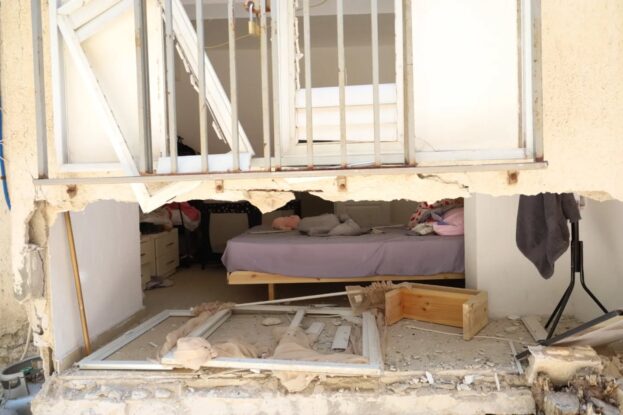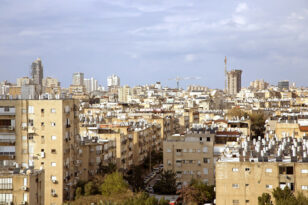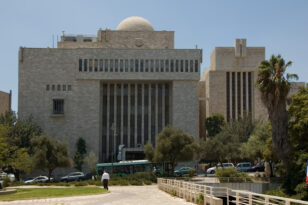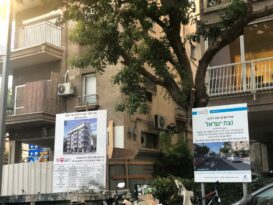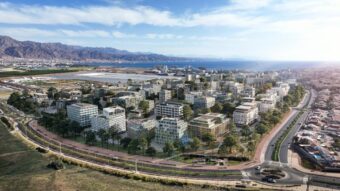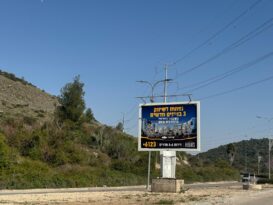In the wake of Iran’s unprecedented missile and drone assault on Israel in June 2025, one fact became crystal clear: the safe room (Mamad) and public shelters saved thousands of lives. While 24 civilians have tragically lost their lives, the vast majority were in protected spaces. From Bat Yam to Tel Aviv, reinforced rooms withstood direct hits, proving the effectiveness of Israel’s decades-long investment in civil defense. Yet with over half the country’s homes still lacking proper protection, this crisis has reignited urgent calls to expand Mamad access, accelerate urban renewal, and treat shelter infrastructure not just as policy—but as a national survival imperative.
In the early hours of June 13, 2025, citizens of Israel were woken up and instructed to prepare, as the IAF launched Operation Rising Lion, a targeted strike on Iranian nuclear and military infrastructure. Just hours later, the retaliation came. In an unprecedented escalation, Iran and its proxies have fired around 350 ballistic missiles and hundreds more combat drones at Israeli cities and strategic sites. As the skies above Israel lit up, the scale and speed of the attacks sent shockwaves through the country. As of June 16, the toll is devastating: 24 civilians have been killed, close to 700 injured, and widespread damage has been reported to homes, roads, and critical infrastructure throughout central Israel.
And yet, in the midst of destruction, countless lives have been saved—thanks to the quiet strength of safe rooms built for this very moment, the effectiveness of Israel’s preparedness, and the public’s adherence to safety protocols.
What Makes a Safe Room?
Since 1992, every residential unit in Israel has been required to provide close access to a protected space. This national mandate, prompted by the Gulf War and formalized in 1993 by the Home Front Command, applies to all new construction. Most homes now include a Mamad (Merhav Mugan Dirati – residential protected space), a reinforced, private room within each unit, while others have a shared safe space on the floor of the building—called a Mamak (Merhav Mugan Komati).
Mamad and Mamak safe rooms are not just thick concrete structures—they are precision-engineered spaces designed to protect occupants from missile strikes, shrapnel, and even chemical or biological threats. Under normal circumstances, they often serve as bedrooms or home offices in private apartments, or as shared spaces for storage or community use in residential buildings.
The latest construction standards for a safe room reflect decades of evolving threats and hard-earned lessons. These include:
• Minimum size: 9 square meters (net) interior area (can be reduced to 5 square meters in approved exceptions)
• Ceiling height: At least 2.5 meters
• Wall structure: Continuous-pour reinforced concrete; no beams or joints
• Wall thickness: 25–30 cm (external); 20 cm (internal)
• Blast door & window: Steel-reinforced, shrapnel-resistant; window must double as emergency exit
• Window placement: At least 1.5 meters above floor; bars prohibited
• Ventilation & filtration: Includes chemical/biological filters
• Utility connections: Electrical outlets, communications ports, protected lighting
These strict regulations ensure that, at the moment a siren sounds, every safe room can immediately function as a life-saving shelter. The attacks over the past weekend have, once again, proved their worth.
When the Sirens Sounded
In Bat Yam, a direct hit destroyed an apartment building. Six people were killed instantly—people who hadn’t reached a shelter in time. Yet, residents in neighboring apartments who took cover in their safe rooms emerged unharmed, even when the buildings around them crumbled. Emergency crews later said the Mamad was “the only room that remained structurally sound.”
In Rishon LeZion, a couple was trapped for hours under rubble. The Mamad where they had taken shelter had collapsed—but only partially. It had absorbed the impact, buying them time until rescue teams arrived. Their survival was credited to the strength of the room’s internal structure.
In Tel Aviv, many families ran into the shared safe room (Mamak) on their floors. Others rushed to public shelters, underground garages, or stairwell-protected areas. Across the country, thousands of lives were saved, simply because people knew where to go—and had somewhere to go.
But the Home Front Command has emphasized that no structure is entirely immune to a direct hit. Tragically, a severe overnight missile barrage struck central and northern Israel across five different impact zones. Among the fatalities were eight people in Petah Tikva, five of whom had been inside a Mamad when the missile struck.
The Protection Gap
While Israel’s building code has required a protected space in every new home since 1992, over half of Israel’s residential units—roughly 1.67 million out of nearly 3 million homes—still lack any kind of reinforced shelter, according to estimates by the Israel Builders Association as of the end of 2024. This vulnerability is especially acute in older buildings in cities like Tel Aviv, Bat Yam, and Rishon LeZion, where many residents have no safe space to quickly turn to when the sirens sound.
Urban Renewal and National Preparedness
Recent wars have prompted urban renewal to shift from a development policy to a survival strategy. Government-backed programs offer full renovations, including a Mamad and seismic reinforcements. After the October 2023 war began, interest in these projects surged.
For many families, the addition of a Mamad is a key incentive to join urban renewal programs, whether it’s demolition and rebuild (Pinui-Binui) or reinforcement (TAMA 38). In complete rebuilds, the safe room is integrated into each new apartment. In reinforcement projects, Mamad rooms are often added onto existing units, though not always possible in every building.
While Home Front Command guidelines currently allow only “essential activity” during emergencies—excluding much of the construction sector—industry leaders are urging a policy shift, arguing that with proper shelter on-site, workers can safely continue building. They emphasize that the construction industry is essential not only for rebuilding areas damaged by missile strikes and providing citizens with protected spaces, but also for keeping pace with Israel’s ongoing housing demand and national resilience.
A Regulatory Shift: What It Takes to Add a Mamad Today
In response to growing security threats, the Israeli government has introduced significant regulatory reforms to make it easier—and faster—for residents to add a Mamad to existing homes. Standalone homes and two-story buildings can now build a Mamad without a permit, with work beginning in as little as 14 days. In larger residential buildings, permit approval times have been reduced from 9–12 months to just 4–6 months, and only 60% of resident approval is now required, down from the previous 75%. Permit fees are often waived, and financial grants are available in designated danger zones. For those required to obtain permits, fees typically range between ₪15,000–25,000, and full construction, including reinforced concrete, a blast-resistant door, shockproof window, and air-filtration system, costs between ₪150,000–200,000. When planning is complete and documents are in order, the entire process can usually be completed within several months; however, emergency fast-track procedures can significantly shorten the timeline.
Buyers and Renters Make a Protected Space a Priority
Today, demand for apartments with a Mamad is at an all-time high. In contrast, there is far less interest in homes that lack the required protection, whether inside the unit or at least on the floor. Across the country, many older apartments without a safe room remain empty, as buyers and renters alike increasingly prioritize security, accessibility, and peace of mind. A private Mamad is now considered one of the most desirable features in a home in Israel.
And the price gap reflects this shift: apartments without protection can sell for 20-30% less than similar homes with a Mamad. So if you’re thinking about buying, it’s more important than ever to factor this into your decision. Choosing a new build in Israel, where a Mamad is standard and built to today’s codes, may be the smartest move. At the very least, look for a home that already includes a protected space—or find out what it would take to add one.
The protected spaces that stand strong in June 2025 are not symbols of fear, but testaments to our nation’s resilience. Because in Israel, safety isn’t a luxury—it’s part of the architecture of life. And preparation is survival.
Updated on June 16, 2025.
The Buyitinisrael Editorial team is made up of industry experts, journalists, researchers, editors, and translators working together to deliver reliable, up-to-date information about the Israeli property market — all in English. With a strong focus on transparency and accessibility, our goal is to empower English-speaking buyers by helping them understand the market and navigate the real estate process with clarity and confidence.
For inquiries, email info@buyitinisrael.com.
